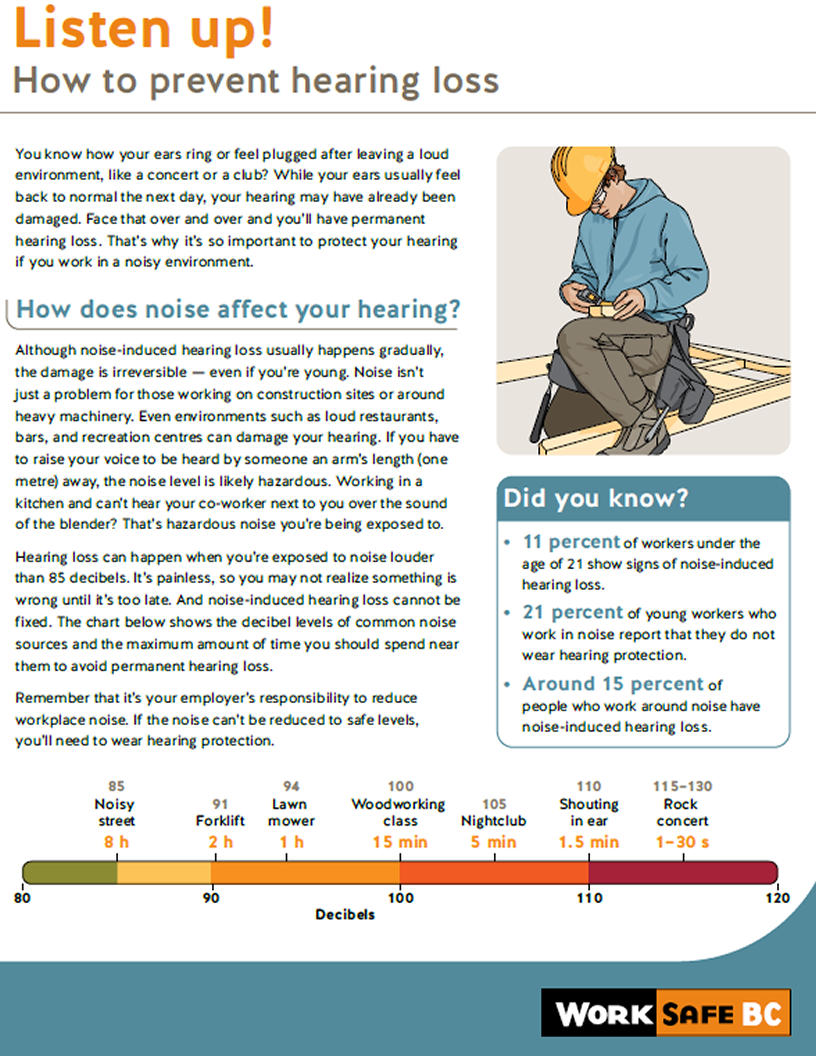Hearing loss
Noise-induced hearing loss is the most common work-related disease. Though it typically happens gradually, damage is permanent. Learn more about whether you're at risk and how to protect yourself.
Too much noise
Workers can suffer from hearing loss by being exposed to a single loud noise or by repeated exposure to a consistent noise.
Being exposed to a noise louder than 85 decibels (dBA) (about the equivalent of sustained traffic noise) during an average eight-hour day can permanently damage hearing. Higher levels of noise can cause permanent damage in shorter periods of time.
A simple way to test whether noise levels could be hazardous is to talk to someone standing at arm’s length from you. If you must raise your voice for that person to hear you, the noise is likely too loud.
The signs and symptoms
Hearing loss isn’t easy to notice. When you’re exposed to excessive noise, damage occurs to tiny sensory cells deep inside your ear, so there's no way to see the damage, and there is no pain. Often, the first sign is that you won't be able to hear high-pitched sounds as well as before.
In industries with hazardous noise, workers are required to take an annual hearing test. This test helps determine if your hearing is being damaged and what can be done to prevent further damage.
How to reduce the risks
Employers are responsible for creating a safe workplace. The best way to decrease noise is to eliminate it at the source. Noise exposure can also be reduced through job rotation, which decreases the time spent in noisy areas.
When noise can't be reduced to a safe level, employers must provide workers with appropriate hearing protection.
Highlights
- New resource to help young workers prevent hearing loss Published on: June 11, 2020




